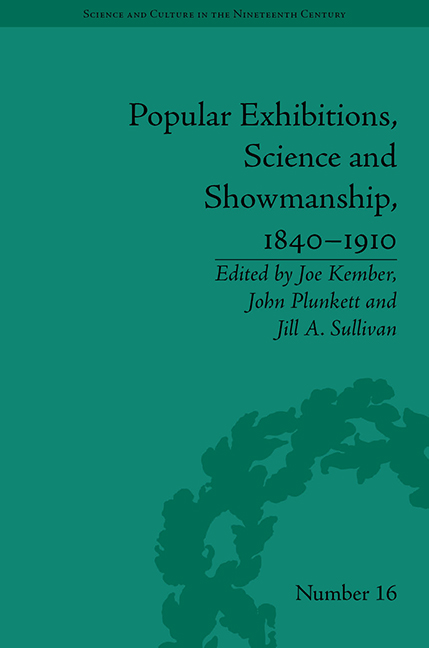Book contents
- Frontmatter
- CONTENTS
- Acknowledgements
- List of Contributors
- List of Figures and Tables
- Introduction
- Part I Science and Spectacle
- Part II Word and Image
- 4 Beyond Scientific Spectacle: Image and Word in Nineteenth-Century Popular Lecturing
- 5 Daniel William Cahill and the Rhetorical Geography of Science and Religion
- 6 Narrativizing ‘The World's Show’: The Great Exhibition, Panoramic Views and Print Supplements
- Part III Staging Knowledge
- Part IV The Politics of Display
- Notes
- Index
5 - Daniel William Cahill and the Rhetorical Geography of Science and Religion
from Part II - Word and Image
- Frontmatter
- CONTENTS
- Acknowledgements
- List of Contributors
- List of Figures and Tables
- Introduction
- Part I Science and Spectacle
- Part II Word and Image
- 4 Beyond Scientific Spectacle: Image and Word in Nineteenth-Century Popular Lecturing
- 5 Daniel William Cahill and the Rhetorical Geography of Science and Religion
- 6 Narrativizing ‘The World's Show’: The Great Exhibition, Panoramic Views and Print Supplements
- Part III Staging Knowledge
- Part IV The Politics of Display
- Notes
- Index
Summary
Introduction
In a polemical missive published in the Freeman's Journal on 20 June 1845, the popular science lecturer and controversialist Daniel William Cahill (1796–1864) addressed the Roman Catholic bishops of Ireland on the subject of geology. In his lengthy epistle Cahill set out to prove that ‘more virulent misrepresentations of Catholic doctrine … are circulated by the geologists of our times than any of our bitterest opponents’. Quoting from Charles Lyell's Principles of Geology and Leveson Vernon Harcourt's Doctrine of the Deluge among other sources Cahill's aim was to reveal the anti-Catholic bias of geological texts of all stripes. What concerned Cahill most was the possibility that Ireland's Catholic population would be exposed to similar prejudices in the lecture hall. Using the kind of highly-charged rhetoric that became his trademark Cahill announced that, ‘the auditory of a scientific lecturer are, as it were, disarmed: being not prepared for the attack they offer no resistance and the wound inflicted reaches the heart at once – it is fatal’. For Cahill this demonstrated why it was necessary that Roman Catholic students should be taught science by Roman Catholic professors (Cahill assured his readers that he had never heard professors of his own creed use science for sectarian ends). In arguing thus Cahill echoed the widely held views that scientific speech should be free from political or religious import and that the lecture room more than the reading room shaped public opinion.
- Type
- Chapter
- Information
- Popular Exhibitions, Science and Showmanship, 1840–1910 , pp. 97 - 114Publisher: Pickering & ChattoFirst published in: 2014



